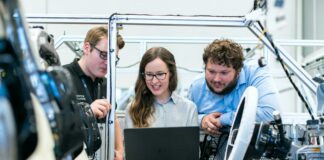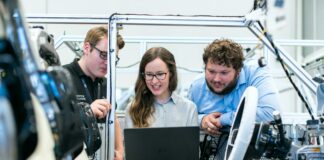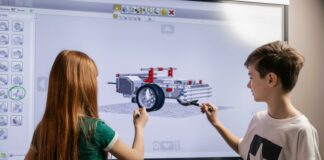BP, a leading energy company, has recently entered into a groundbreaking agreement with the US space agency NASA to explore the possibility of using BP’s advanced drilling technology on Mars and the Moon. This collaboration aims to leverage the expertise gained by both organizations in working in extreme environments to push the boundaries of human exploration beyond Earth.
Exploring New Frontiers
The partnership between BP and NASA represents a significant step forward in the field of space exploration. By sharing their knowledge and technological capabilities, the two organizations are poised to unlock new possibilities for drilling on other celestial bodies. This collaboration not only has the potential to advance BP’s efforts in oil and gas exploration on Earth but also to contribute to the scientific exploration of Mars, the Moon, and other planets in our solar system.
Giovanni Cristofoli, a senior executive at BP, highlighted the shared technical expertise of both BP and NASA in working in hostile environments. He emphasized the importance of collaboration in solving complex engineering challenges efficiently, allowing for the safe and sustainable extraction of energy resources while minimizing environmental impact. The exchange of information between the two entities is expected to facilitate faster problem-solving and innovation in the field of space exploration.
Technical Innovations
One of the key aspects of the collaboration between BP and NASA is the sharing of digital models and simulations that enable engineers and scientists to test new equipment in extreme environments. Whether it’s deep-sea drilling at 14,000 feet underwater or exploring the surface of Mars from 140 million miles away, the use of advanced technology will play a crucial role in pushing the boundaries of exploration and discovery.
Furthermore, the partnership between BP and NASA opens up the possibility of future collaborations in utilizing cutting-edge technologies such as hydrogen, regenerative fuel cells, high-capacity batteries, solar power systems, and small-scale nuclear power systems. These innovative solutions could revolutionize the way we extract resources and generate energy both on Earth and in space, paving the way for sustainable and efficient exploration of celestial bodies.
Implications for Space Exploration
The collaboration between BP and NASA comes at a time when the scientific community is increasingly focused on exploring the potential for life beyond Earth. Recent discoveries of vast amounts of water trapped deep within Mars’ crust have raised intriguing questions about the possibility of microbial life on the red planet. Scientists believe that these “ancient Martian oceans” could hold the key to understanding the planet’s past and present habitability.
By leveraging BP’s expertise in deep-sea drilling, researchers and engineers may be able to access these underground reservoirs of water on Mars, shedding light on the planet’s geological history and potential for hosting life. The advanced drilling technology developed by BP could prove invaluable in extracting samples from beneath Mars’ surface, providing valuable insights into the planet’s evolution and potential for future exploration.
In conclusion, the collaboration between BP and NASA represents a significant milestone in the field of space exploration. By combining their expertise and resources, these two organizations are poised to unlock new possibilities for drilling on Mars and the Moon, paving the way for future exploration and discovery in our solar system and beyond.

































































